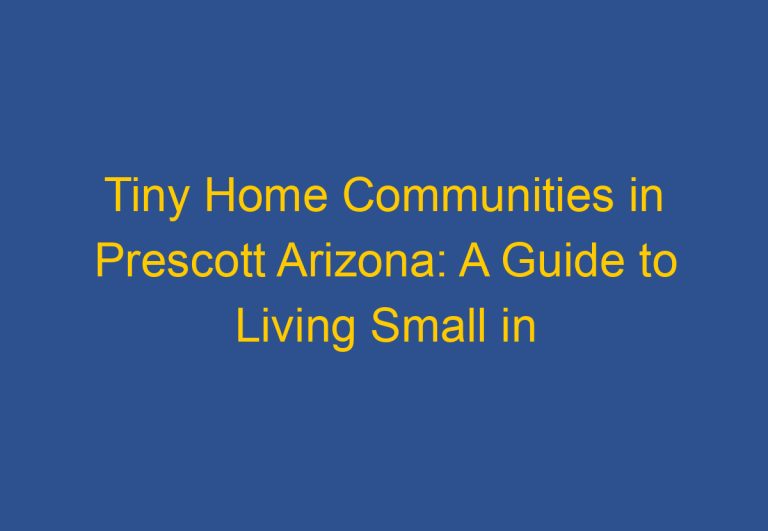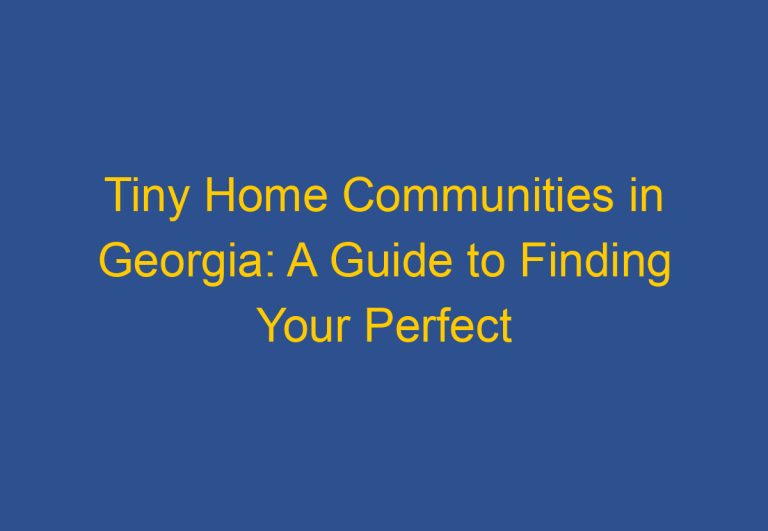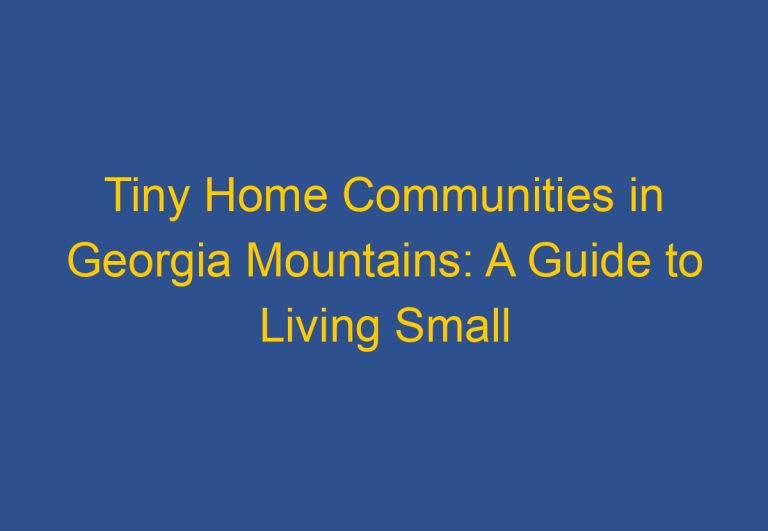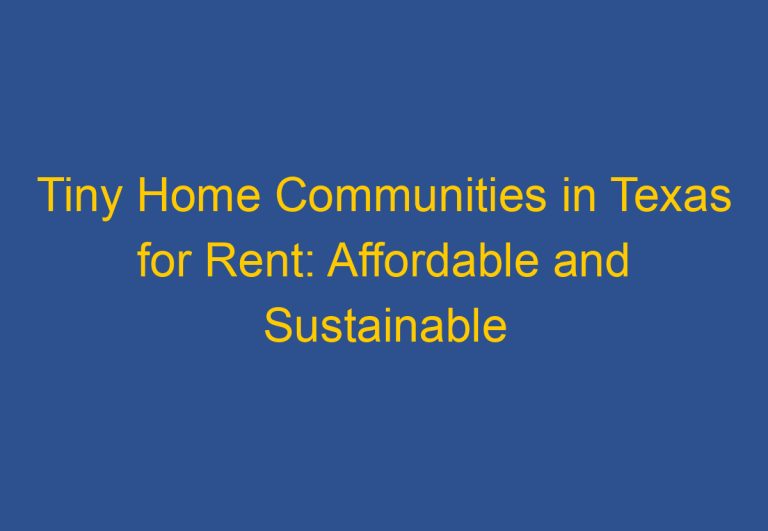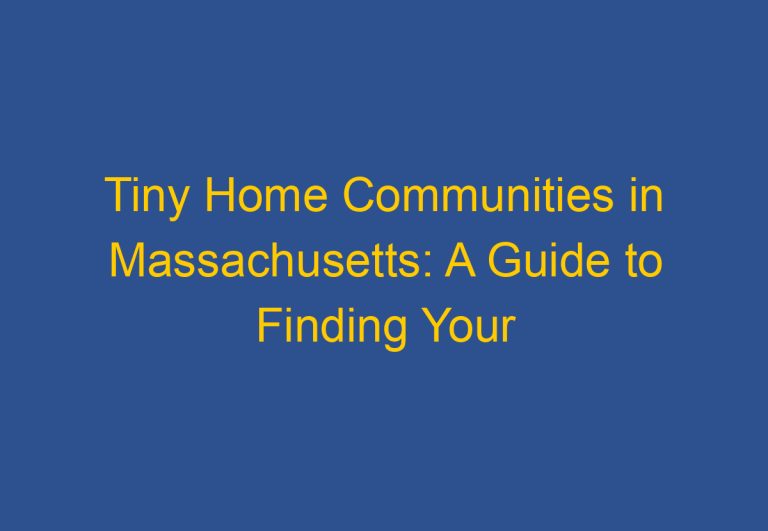Tiny Home Communities in Vermont: A Guide to Finding Your Perfect Small-Scale Living Community
Tiny home communities are a growing trend in Vermont, offering a unique lifestyle for those looking to downsize and simplify their lives. These communities are made up of small, often mobile homes that are designed to be both functional and efficient, while also promoting a sense of community and connectedness.
For those who are interested in the tiny home movement, Vermont is a great place to start. The state has a number of tiny home communities and villages, each with its own unique character and charm. Many of these communities offer a range of amenities, including communal gardens, shared living spaces, and even workshops and classes on topics such as sustainable living and DIY home building.
Whether you are looking to embrace a more minimalist lifestyle, reduce your carbon footprint, or simply enjoy the camaraderie of like-minded individuals, tiny home communities in Vermont offer a wealth of opportunities and experiences. So if you are curious about this growing movement, consider exploring some of the many tiny home communities that Vermont has to offer.
Establishing a Tiny Home in Vermont
Understanding Vermont’s Building Codes and Zoning Laws
Before establishing a tiny home in Vermont, it is crucial to understand the building codes and zoning laws. Vermont’s building codes and zoning regulations vary from county to county, town to town, and city to city. Generally, tiny homes should be at least 100 square feet but no more than 1,000 square feet. However, some cities and towns may have different limits, so it is important to check with local authorities before building.
The Vermont Building Code (VBC) is the state’s building code, which outlines the minimum standards for construction and design for all buildings in Vermont. It is essential to adhere to the VBC when building a tiny home. Additionally, local zoning regulations must be followed, which can be found on the local government’s website.
Selecting the Right Location
Selecting the right location is crucial when establishing a tiny home in Vermont. Rural areas are ideal locations for tiny homes because they are more likely to have fewer zoning and building code restrictions. However, it is important to note that some towns and cities in Vermont have embraced the tiny home movement and have created tiny home communities.
When selecting a location, it is important to consider factors such as access to utilities, proximity to amenities, and the environment. Additionally, it is crucial to ensure that the location adheres to the local zoning regulations and building codes.
Design and Construction Considerations
Building a tiny home in Vermont requires careful consideration of design and construction. Architects and builders who specialize in tiny homes can provide valuable resources and expertise. Jamaica Cottage Shop and Tiny House Crafters are two companies in Vermont that specialize in building tiny homes.
When designing and constructing a tiny home, it is essential to consider factors such as energy efficiency, storage, and comfort. It is also important to ensure that the tiny home is built to code and adheres to local zoning regulations.
In conclusion, establishing a tiny home in Vermont requires an understanding of the building codes and zoning laws, selecting the right location, and careful consideration of design and construction. By doing thorough research, utilizing available resources, and adhering to regulations, individuals can successfully build and establish a tiny home in Vermont.
Living in a Tiny Home Community
Living in a tiny home community can be a unique and rewarding experience. It offers a sense of community and belonging that is often missing in larger neighborhoods. In Vermont, there are several tiny home communities to choose from, each with its own features and amenities.
Community Features and Amenities
Tiny home communities in Vermont offer a wide range of features and amenities. Some communities offer communal gardens, while others have swimming pools or hiking trails. Some communities are off-grid, while others have access to utilities such as water and electricity. It is important to research each community to find the features and amenities that best fit your lifestyle.
Lifestyle and Sustainability
Living in a tiny home community is not just about the physical space, it is also about the lifestyle and sustainability. Tiny home communities often encourage a more sustainable and minimalist lifestyle, which can be beneficial for both the environment and your wallet. Residents of tiny home communities often share resources and work together to reduce waste and live more sustainably.
Joining the Tiny House Movement
Joining the tiny house movement is not just about living in a small space, it is also about making a conscious decision to live a simpler and more sustainable lifestyle. Tiny home communities provide a supportive environment for those who want to join the movement. They offer advice and support for those who are new to tiny living and can help with planning and decision-making.
Overall, living in a tiny home community in Vermont can be a great way to experience off-grid living, sustainability, and a supportive community. Whether you are looking for a luxury tiny home or a more minimalist lifestyle, there is a tiny home community in Vermont that can meet your needs.
Frequently Asked Questions
What are the top-rated tiny home communities in Vermont?
Vermont offers a variety of tiny home communities, each with its own unique charm and amenities. Some of the top-rated communities include Community A, located in the picturesque countryside and offering communal gardens, a shared workshop space, and regular community events. Another popular option is Tiny Towne in Rochester, New Hampshire, which offers a range of home sizes from 250 to 600 square feet.
How can I find tiny homes for sale within Vermont communities?
Several online platforms specialize in listing tiny homes for sale in Vermont. Some of the most popular platforms include Tiny House Listings, Tiny House Marketplace, and Tiny House Finder. Additionally, local real estate agents and builders may also have information on available tiny homes for sale.
What are the zoning regulations for tiny houses in Vermont?
The size of tiny homes varies from city to city, county to county, and town to town in Vermont. Generally, tiny homes should be at least 100 square feet but no more than 1,000 square feet. However, some cities and towns may have different limits, so it is important to check with your local government before building. Additionally, zoning regulations may vary depending on whether the tiny home is on a foundation or on wheels.
Can I rent a tiny home in a Vermont community, and if so, where?
Yes, it is possible to rent a tiny home in Vermont. Some communities offer tiny homes for rent, while others may allow homeowners to rent out their tiny homes on platforms such as Airbnb. Some popular options for renting a tiny home in Vermont include Tiny House Village at Mt. Hood, Tumbleweed Tiny House Company, and Escape Tiny Homes.
What are the most affordable tiny home communities in Vermont?
The cost of living in a tiny home community in Vermont varies depending on factors such as location, amenities, and size of the home. However, some of the most affordable communities include Tiny Towne in Rochester, New Hampshire, and Community A in Vermont’s countryside. It is important to note that the cost of living in a tiny home community may be lower than traditional housing, but additional costs such as utilities, maintenance, and community fees may still apply.
What amenities are typically offered in Vermont’s tiny home communities?
Tiny home communities in Vermont offer a range of amenities, including communal spaces such as gardens, workshops, and recreation areas. Some communities may also offer shared laundry facilities, parking, and storage options. Additionally, some communities may have on-site management and maintenance staff to assist residents with any needs that may arise.






